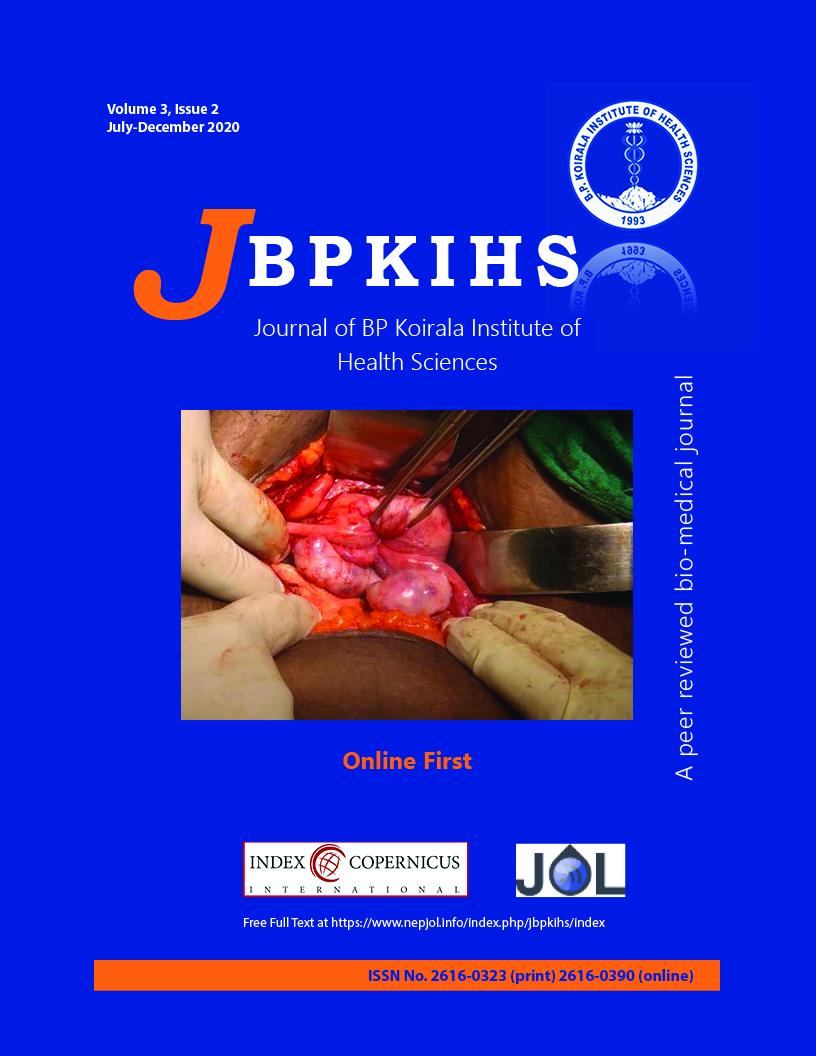Fetomaternal Outcome in Operative Vaginal Deliveries in a Tertiary Care Centre: A Descriptive Retrospective Study
DOI:
https://doi.org/10.3126/jbpkihs.v3i2.36092Keywords:
maternal outcome, neonatal outcome, operative vaginal delivery, vacuumAbstract
Background: Operative vaginal delivery is safe and effctive when applied by well-trained personnel. However, it is an underutilized component of obstetric care. We aimed to estimate the frequency of operative vaginal delivery in a tertiary care center and evaluate the immediate maternal and fetal morbidities.
Methods: This descriptive retrospective study was carried out in the Department of Obstetrics and Gynecology, Chitwan Medical College and Teaching Hospital. Medical records of all operative vaginal deliveries conducted from May 2019 to April 2020 were retrieved. Data regarding demography, delivery characteristics, maternal and fetal morbidity and mortality associated with operative vaginal deliveries were collected.
Results: The frequency of operative vaginal delivery was found to be 2.3% among 3060 deliveries. It was more commonly used in nulliparous women (n = 54, 76.1%); the commonest age group being 20 to 35 years. The commonest indication was fetal distress (n = 32, 45.1%) followed by prolonged second stage of labor (n = 26, 36.6%). The associated maternal morbidities included postpartum hemorrhage (n = 12, 16.9%), need of blood transfusion (n = 9, 12.7%), fever (n = 6, 8.5%), cervical tear (n = 3, 4.2%) and third/fourth degree perineal tears (n = 3, 4.2%). One neonate had cephalhematoma and 14 neonates (19.7%) needed admission in neonatal intensive care unit.
Conclusion: Operative vaginal delivery accounted for 2.3% of the total deliveries and was associated with a few maternal and fetal morbidities.
Downloads
Downloads
Published
How to Cite
Issue
Section
License
This license enables reusers to copy and distribute the material in any medium or format in unadapted form only, for noncommercial purposes only, and only so long as attribution is given to the creator.




